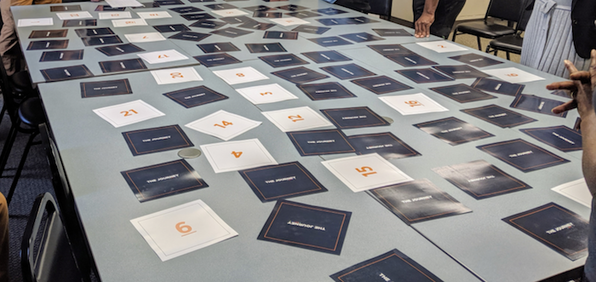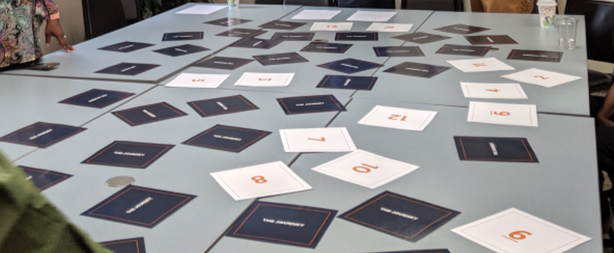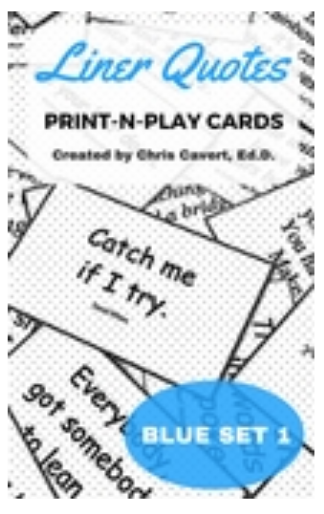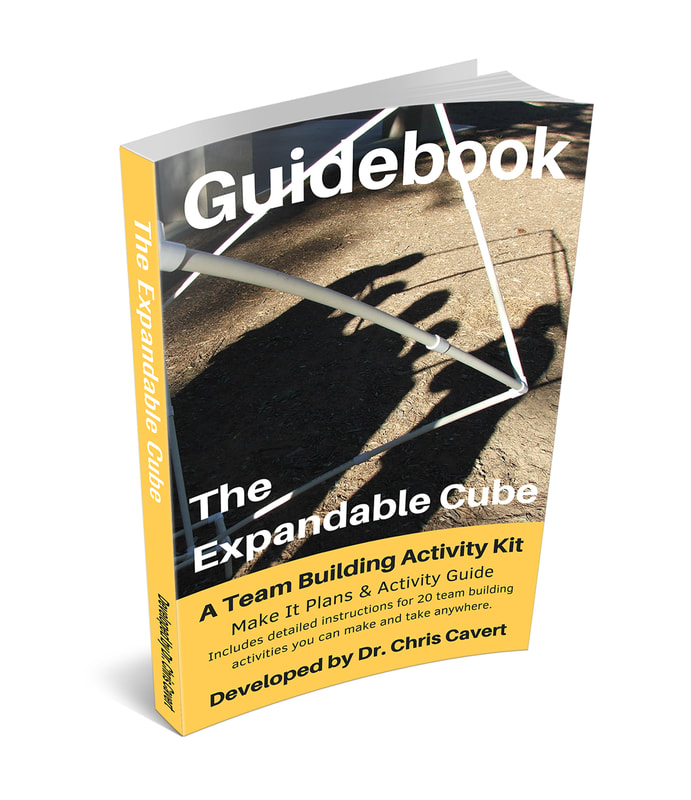Not to mention the debriefs! This activity truly has some of the most amazing and impactful debriefs that can be focused on siloed efforts that feed the overall team’s mission, awareness of others’ efforts/roles, asking for help, offering support, your locus of control, and mindset, to name a few.
The activity is called Memory, or “100” [Titled for this post, Memory 100]. It was originally developed as a modification to your classic Key Punch (Quicksilver, Rohnke & Butler) in an effort to leverage the mind and limit physical requirement. Read below for further instructions and have the most fun!
When developing these materials, you essentially want a “deck” of 100 cards. Each card should be labeled with an individual number, 1-100. You want to write the number on 1 side of the card and leave the back side blank/unmarked. I’ve used paper, paper plates (shown above), and even had cards developed (shown below).
Depending on the challenge level you’re looking for, select a card to individual ratio. Typically, for a medium-high level of challenge, I put out cards on the tables with a 7:1 ratio; i.e. cards 1 to 70 for 10 participants. [An easier challenge would be a 4:1 ratio for example.]
To set up, place all cards face down on a large table or the floor. The cards should be randomized, and scattered around the table, without any overlapping.
1.Under each card is a number. There are X cards in total that are numbered individually, 1 through X . [X = the maximum number of cards you are using.]
2.The objective of the activity is the flip each card over sequentially, 1 to X .
Activity Rules:
1. The cards must be flipped sequentially, 1 to X .
2. If a card is flipped out of order (e.g., 1, 2, 3, 9), all cards must be flipped back, number side down.
3. Only one card can be flipped over at a time.
4. The cards must remain exactly where they are and cannot be moved. They must be flipped/reflipped in the same location.
5. Neither the cards nor table can be marked.
6. Everyone in the group must participate in some way.
7. For an additional challenge: You may not write, take notes or pictures.
8. For a little leeway: Include 1 or 2 Saving Points. These can be used throughout the activity, if the group unanimously decides that they’d like to save the cards at a certain point (prior to making a mistake). If a mistake is made after saving a 'point', the group only falls back to the last used Saving Point. For example, if the group flips up to 35 successfully and is not confident that they know where 36 is, they can Save at 35. If they flip the wrong card, they can leave 1 to 35 facing up.
- With the 7:1 ratio, you can (obviously) have 14 to 15 players - If I ("I" is Chris) would do this one with that many players, one of my Facilitated Objectives would be to practice staying engaged in a long-term task and understanding exactly what one's roles and responsibilities are.
- Fetcher tells me this activity, using all 100 cards/numbers, can take up to (and even over) an hour. So, this is a 'grit' and 'stick to it' activity - and, what outcomes are you after with this sort of activity?
- I tried this same activity recently with a group of six players and a set of 26 jumbo letter tiles (Jumbo Bananagrams) - A to Z. Played as described above. It was relatively easy, taking about 20 minutes. Players, after taking turns flipping over the letters in 'their area,' they were then able to flip the letters over in order. And, this might be a good progression into Memory 100 - what will carry over into the long game?
- Another Number Cards Resource: I happen to have a card game on my shelf called "The Game" (thanks to Floyd for teaching me this one). Essentially, the deck is a set of numbers, 1 to 100 - perfect for Memory 100. (And a really fun group cooperative card game in it's own right. Up to five players.)
Chris Cavert, Ed.D.














 RSS Feed
RSS Feed